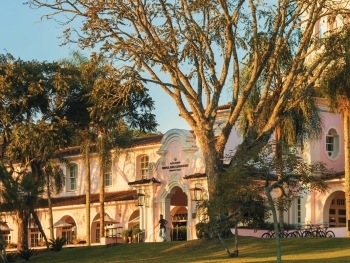For over a century, the Waldorf-Astoria (now spelled Waldorf=Astoria) has stood as a beacon of luxury and sophistication in the hospitality industry. When it was first established at the end of the nineteenth century, it not only held the title of the largest hotel in the world but also set new standards for advanced and prestigious accommodations.
George C. Boldt: The Modern Hotel Pioneer
George C. Boldt, the proprietor of the Waldorf-Astoria, earned the moniker "the inventor of the modern hotel." His influence extended far beyond mere operational and technical innovations. Much of the hotel's glamorous and luxurious reputation can be attributed to his wife, Louise Kehrer Boldt, who was an instrumental partner in their early ventures. George Boldt, who was a contemporary of the legendary César Ritz, mirrored Ritz's impact on the European hospitality scene by revolutionizing the American hotel industry. Together, the Boldts transformed traditional hotels into multifaceted civic centers that drew the social elite, providing not just food and lodging, but also a status symbol for the burgeoning wealthy class of New York.
From Humble Beginnings to Great Success
George Carl Boldt was born in 1851 on the German island of Rügen in the Baltic Sea, a locale known for its elegant resort built by the local prince. This early exposure to hospitality likely influenced his career path. At the tender age of thirteen, Boldt emigrated to America alone and began working as a kitchen helper in a small New York City hotel. His rise from these humble beginnings to becoming a wealthy and prominent celebrity is a classic rags-to-riches story. Boldt's funeral was a significant event, with traffic on Fifth Avenue halting to allow his cortege to pass from the Waldorf-Astoria to the church, attended by some of the most notable figures in America.
The Influence of Louise Kehrer Boldt
Louise Kehrer Boldt, born in Philadelphia to a German-born tavern keeper who later became the steward of the exclusive Philadelphia Club, played a crucial role in George Boldt's success. George began working as an assistant to Louise's father, William Kehrer. After marrying Louise, George received significant support from wealthy members of the Philadelphia Club, enabling them to establish the Bellevue, a small hotel in Philadelphia.
Louise's insights into the desires of affluent women led to several innovations that added a glamorous, feminine touch to their hotel. The Bellevue quickly gained fame for its exceptional food, with delicacies like Philadelphia Terrapin being shipped to Queen Victoria. This success caught the attention of New York City's elite, including the Astors and Vanderbilts, leading to George Boldt being chosen to manage the new hotel that William Waldorf Astor planned to build in New York City.
The Birth of the Waldorf
The Waldorf Hotel, which opened in 1894, was built to George Boldt's specifications, with Louise Boldt decorating every room and introducing many innovative features such as pin cushions on dressers. One of the key strategies the Boldts learned from their Philadelphia venture was the appeal of exclusivity. By charging premium prices, they attracted a clientele eager to demonstrate their wealth. Boldt also pioneered the use of the velvet rope, managing access to the exclusive Palm Court, where only the privileged, properly attired guests could enter.
Despite opening during a severe economic depression, the Waldorf quickly became successful, prompting another Astor family member to invest in its expansion. The new Astoria section opened in 1897, making it the largest hotel in the world. As one observer noted, Boldt's genius lay in "offering exclusiveness to the masses."
A Lasting Legacy
The success of the Waldorf-Astoria made George Boldt a multimillionaire within a few years. He and Louise then embarked on constructing Boldt Castle, a colossal stone mansion, which became one of the largest private homes in America. Boldt continued to expand his empire by building and owning the grand Bellevue-Stratford Hotel in Philadelphia and engaging in various banking and business ventures.
After George Boldt's death in 1915, his children managed the Waldorf-Astoria for a time before it was sold. The original site of the hotel was eventually replaced by the Empire State Building. However, the Waldorf-Astoria's legacy continued as it moved to a new landmark location on Park Avenue, where it remains one of the world's grand hotels to this day.












